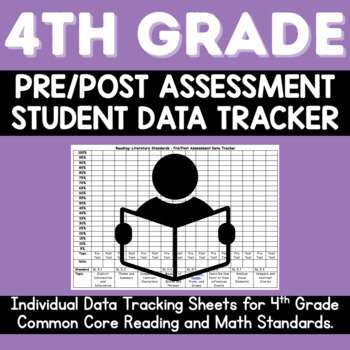4th Grade Common Core Student Data Tracker
- PDF
Description
Are you looking for a way for your students to take accountability of their learning as you teach the reading and math standards? These individual student data tracking sheets aligned to 4th Grade Common Core Reading and Math Standards allow students to keep a data folder or data binder, and graph the scores of their pre and post assessments in reading and math.
Included are:
- Suggestions for Use in your Classroom
- 7 different student data tracking sheets: 2 for reading with literature and information text standards, 5 for math with OA, NBT, NF, MD, and G standards.
Labeled Student Data Sheets aligned to Common Core:
- 4th Grade Reading Literature Standards
- 4th Grade Reading Informational Text Standards
- 4th Grade Math Operations and Algebraic Thinking Standards
- 4th Grade Math Numbers and Operations in Base Ten Standards
- 4th Grade Math Numbers and Operations – Fractions Standards
- 4th Grade Math Measurement and Data Standards
Check out my other Student Data Tracker for Third Grade Reading and Math Common Core Standards!
- - - - - - - - - - - - - - - - - - - - - - - - - - - - - - - - - - - - - - - - - - - - - - - - - - - - - - - - - - -
Please leave feedback for this product. Your comments are appreciated and welcomed!
Check out other resources in my store! Feel free to request additional data trackers for student use!
You can contact me with any questions or concerns at morgankingray@gmail.com.




